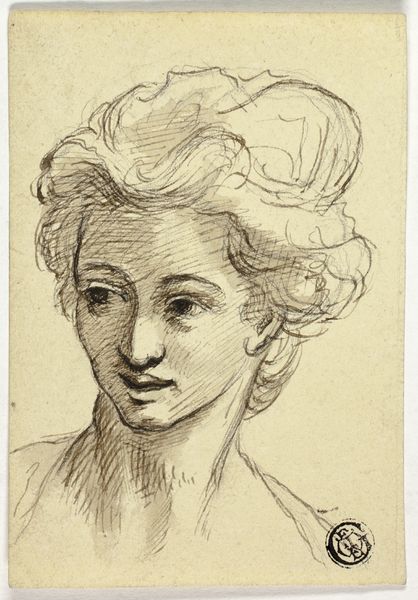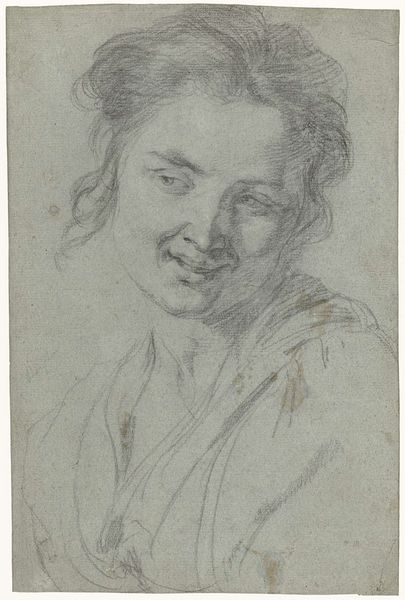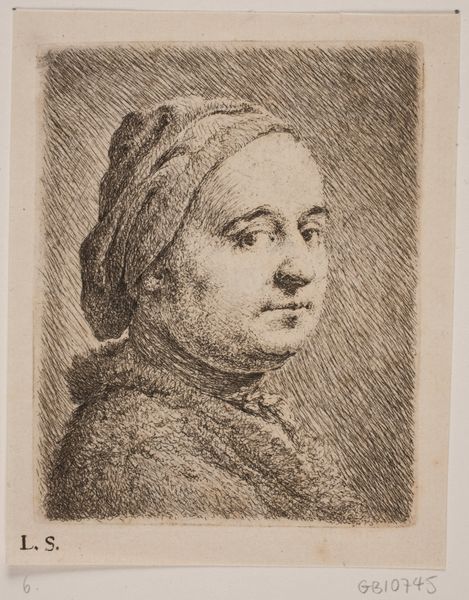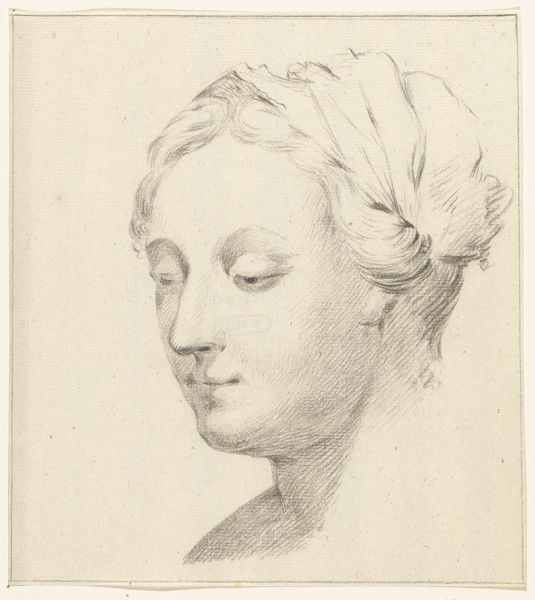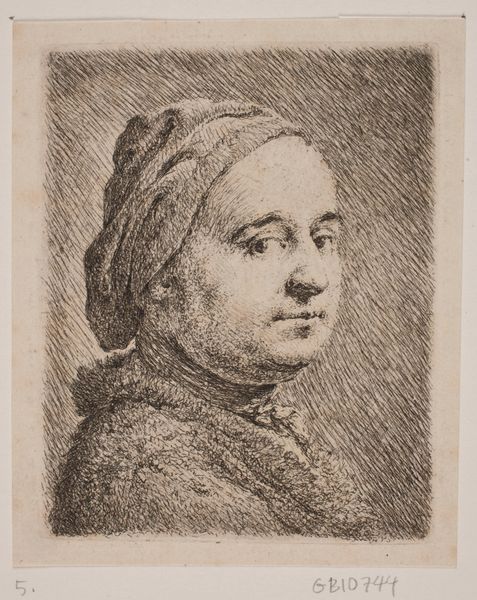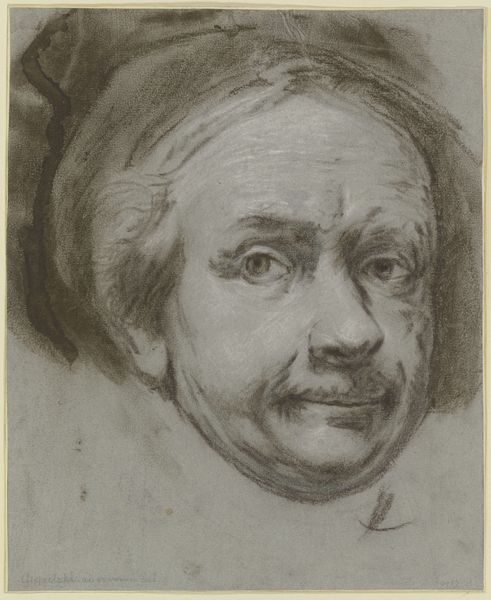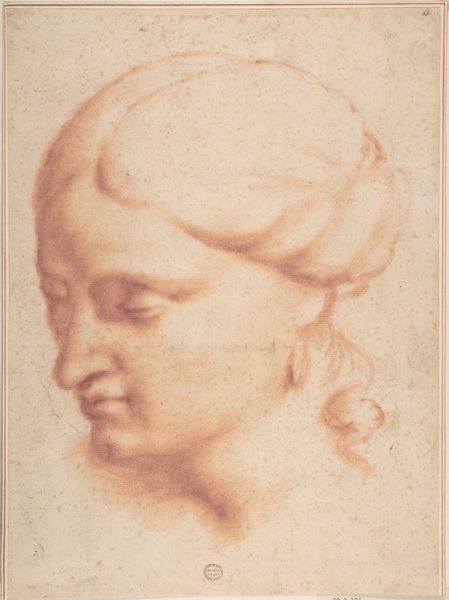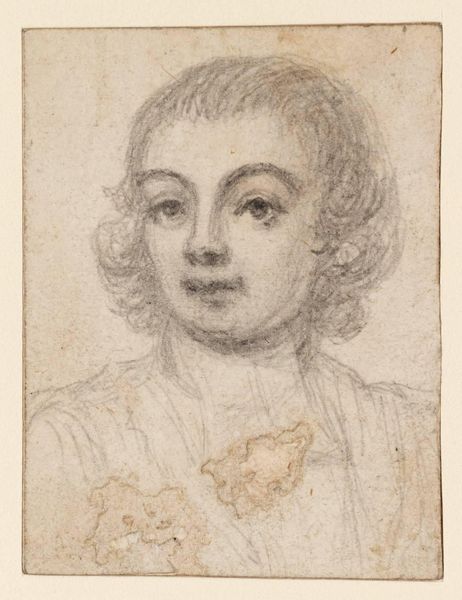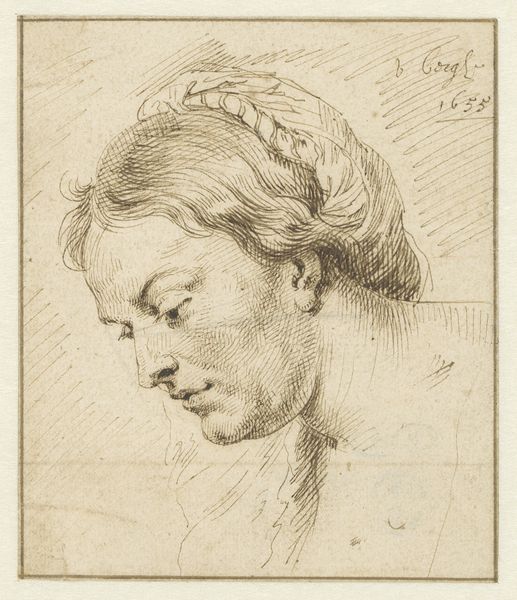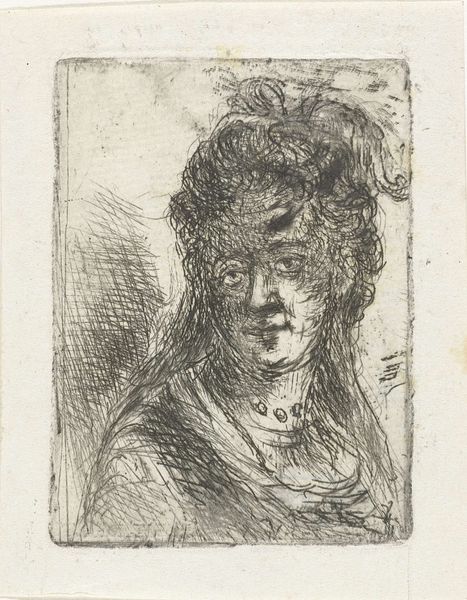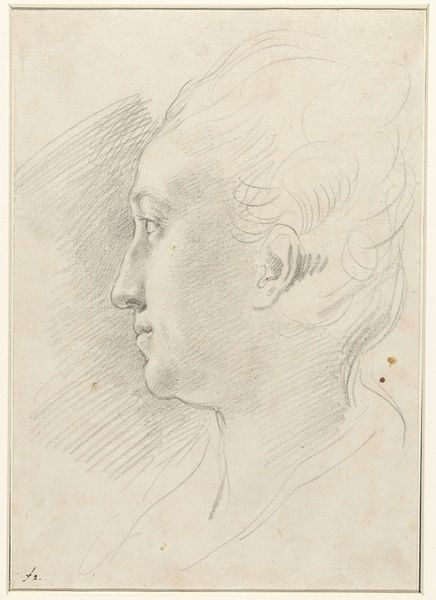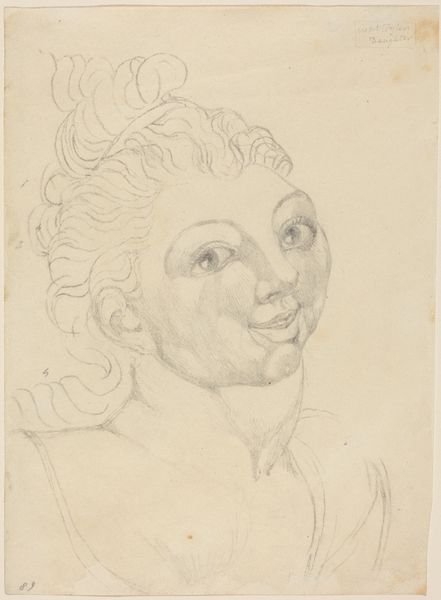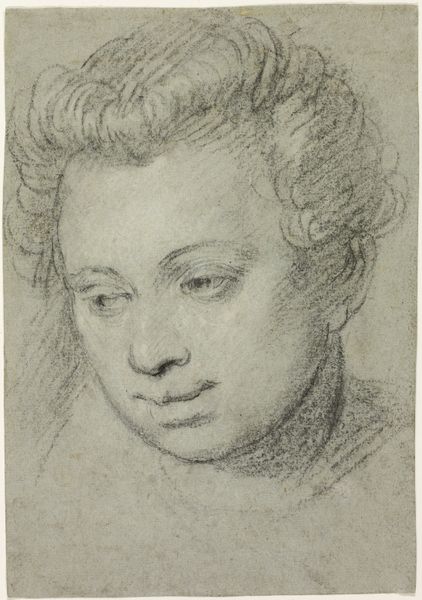
drawing, pencil
#
portrait
#
drawing
#
baroque
#
figuration
#
pencil drawing
#
pencil
#
line
#
realism
Dimensions: height 192 mm, width 123 mm
Copyright: Rijks Museum: Open Domain
Bernard Picart rendered this head of a smiling woman in sanguine chalk, a popular medium at the time, sometime between 1683 and 1733. The informal, immediate nature of the drawing suggests that it was made as a study or exercise rather than a finished piece of art intended for public display. Drawings like this provided artists with the opportunity to hone their skills and explore the nuances of human expression. They were also useful for teaching in the art academy, which, in places like 18th-century France, played an important role in regulating artistic production. The academies taught students the ‘correct’ way to draw, to help them in their artistic profession. By studying the social and institutional contexts in which art is created, we can gain a deeper understanding of its meaning and significance, and, in this case, the value placed on accurate depiction and idealization of the human form. Researching the history of the Rijksmuseum might help us understand the journey of this drawing from artist's studio to public collection.
Comments
No comments
Be the first to comment and join the conversation on the ultimate creative platform.
